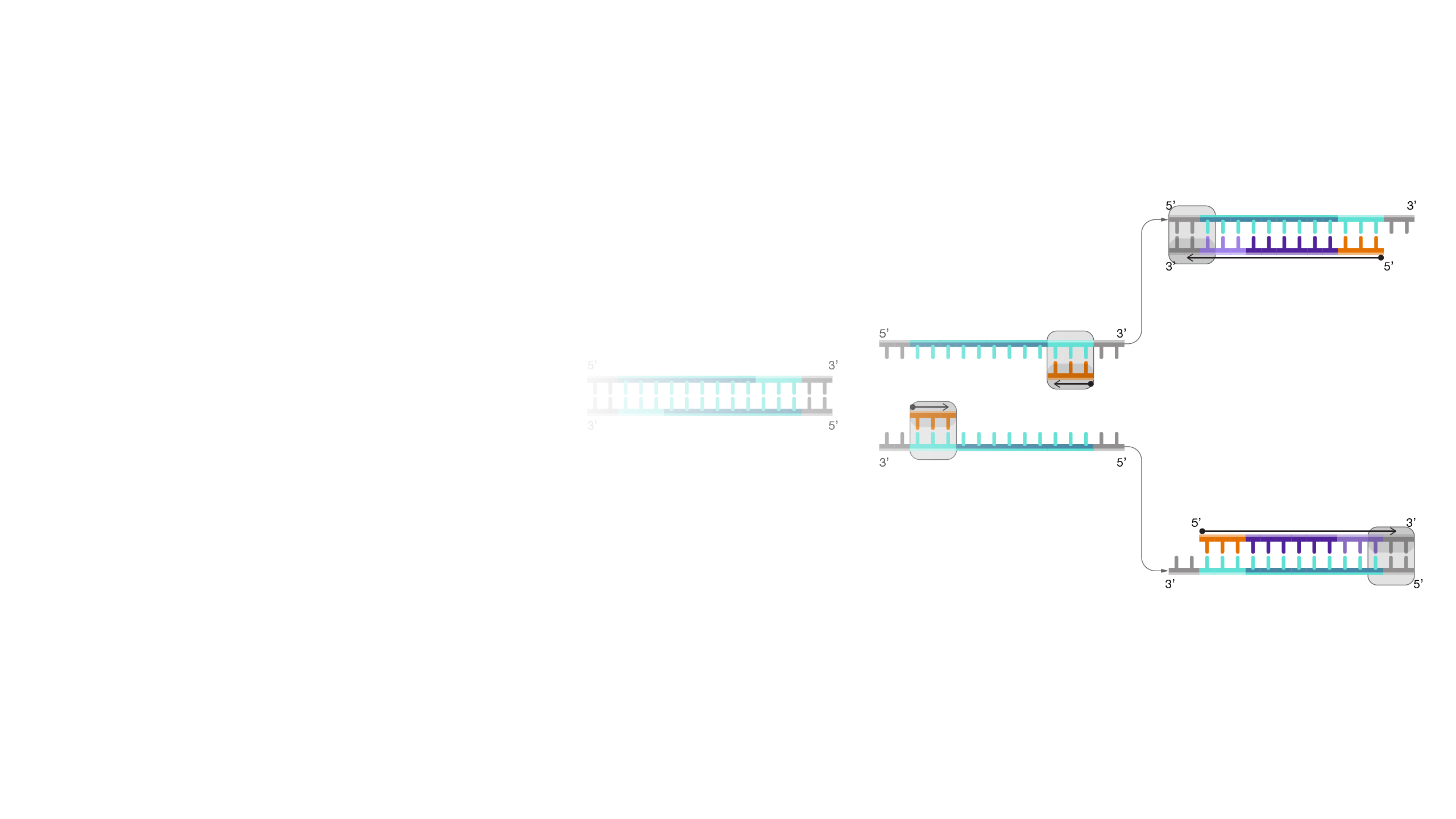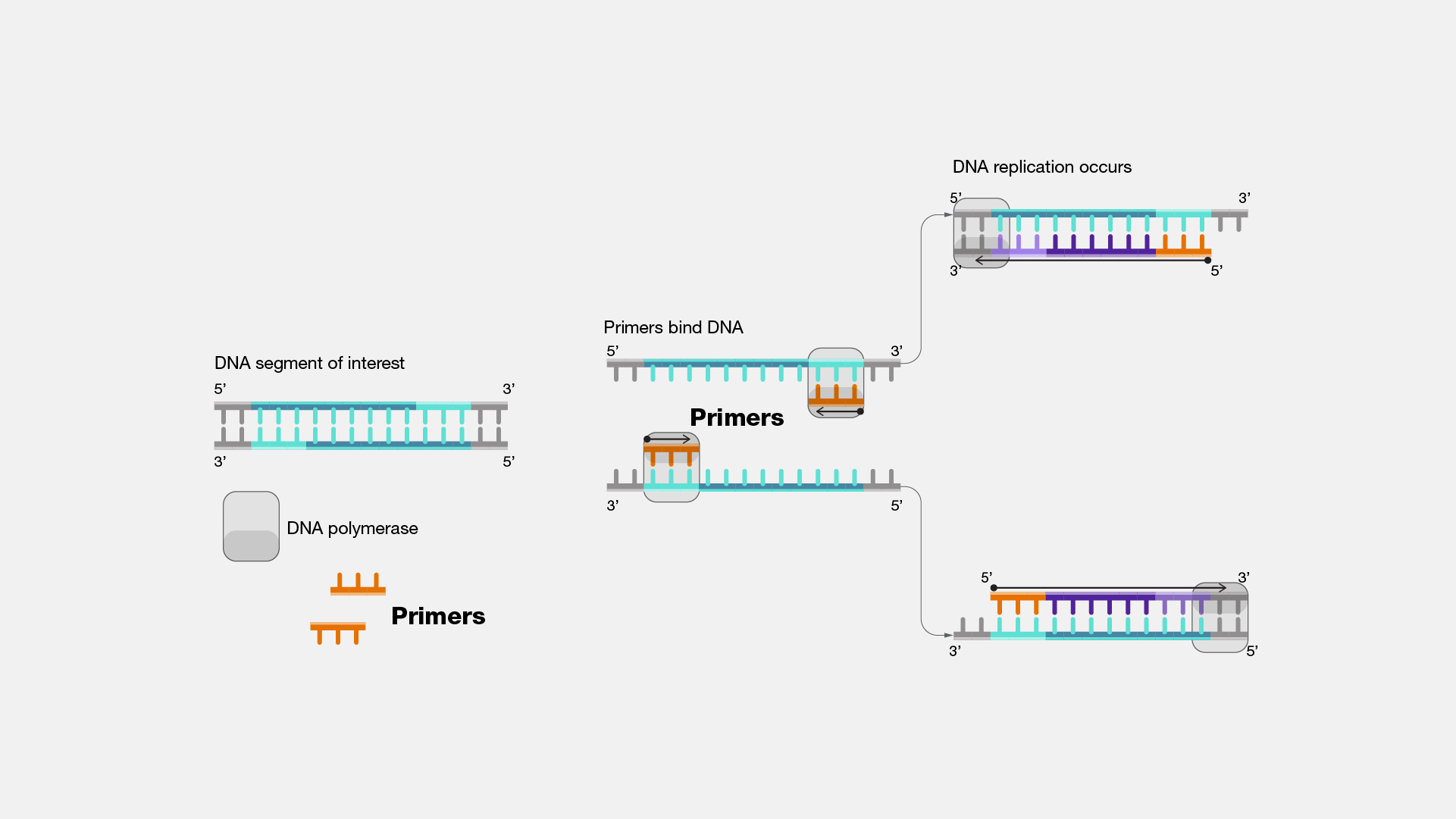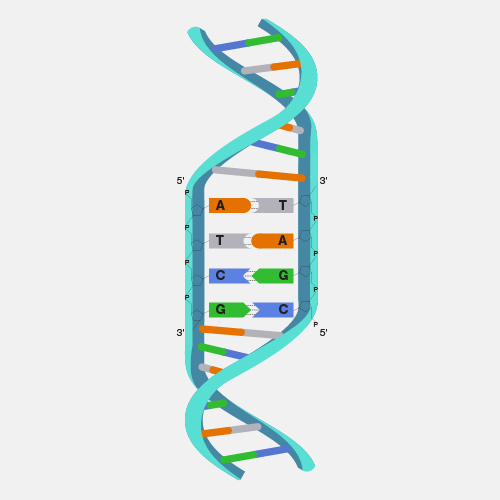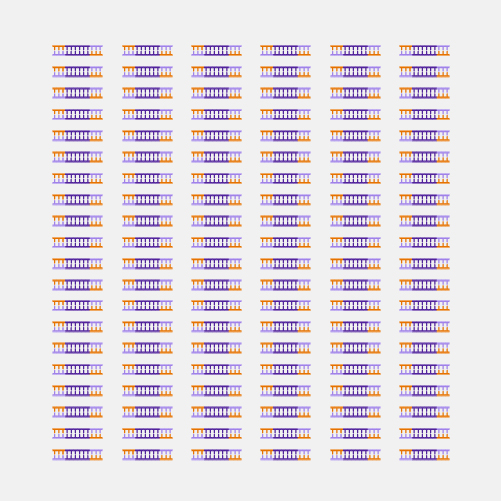
Primer
Definition
A primer, as related to genomics, is a short single-stranded DNA fragment used in certain laboratory techniques, such as the polymerase chain reaction (PCR). In the PCR method, a pair of primers hybridizes with the sample DNA and defines the region that will be amplified, resulting in millions and millions of copies in a very short timeframe. Primers are also used in DNA sequencing and other experimental processes.

Narration
Primer. If you spend the weekend in a genomics lab, it is very likely you will hear about primers. That is how important primers are, and for a good reason. Primers are short stretches of DNA that target unique sequences and help identify a unique part of genome — let's say, a gene. Primers are usually 18 to 25 nucleotides long. They can be synthesized in a special lab, and are used in many different ways. For example, you can make multiple new copies of DNA from a template. You can introduce useful changes to the template DNA, where you can use them to analyze DNA by telling different versions of different copies.




